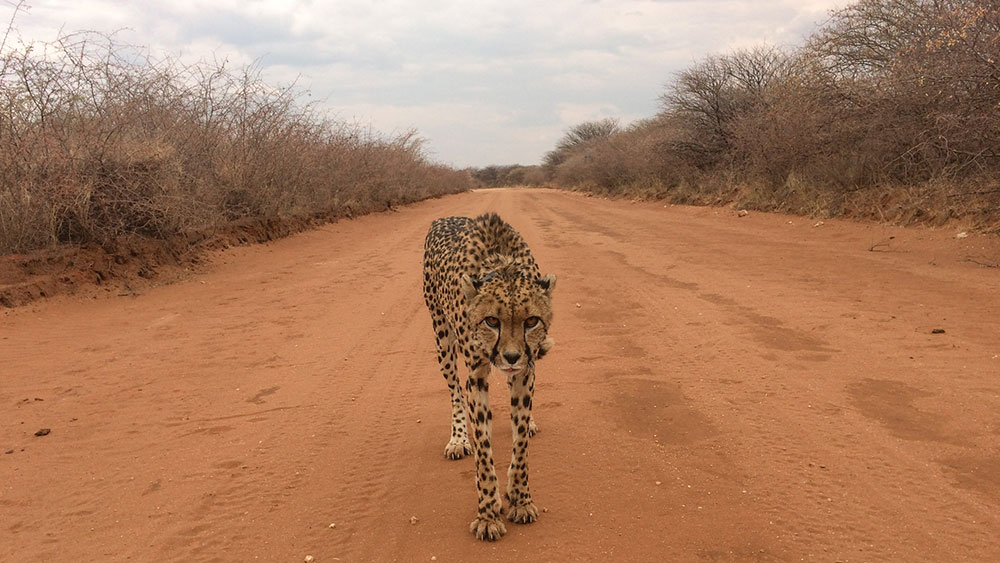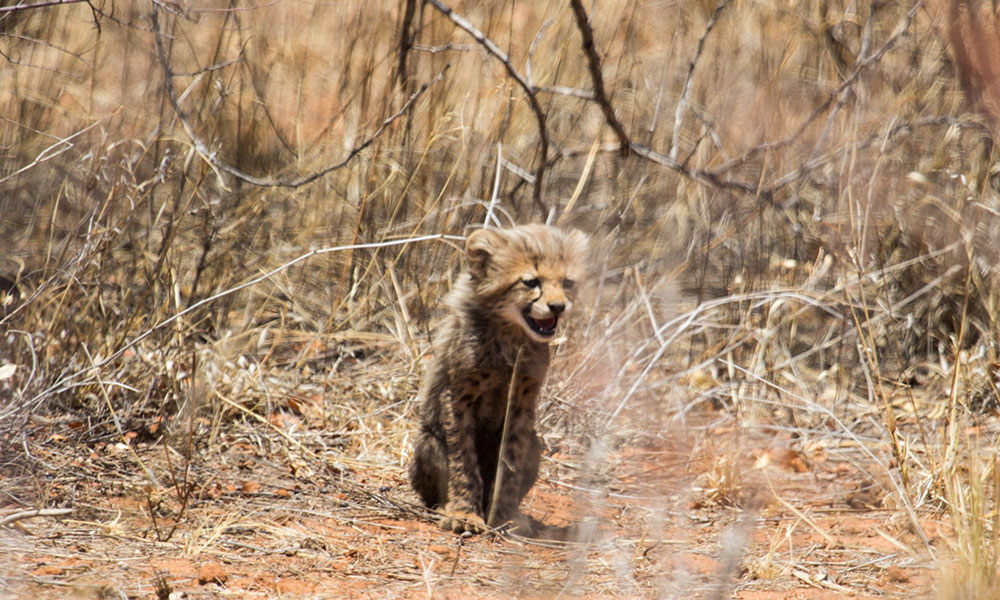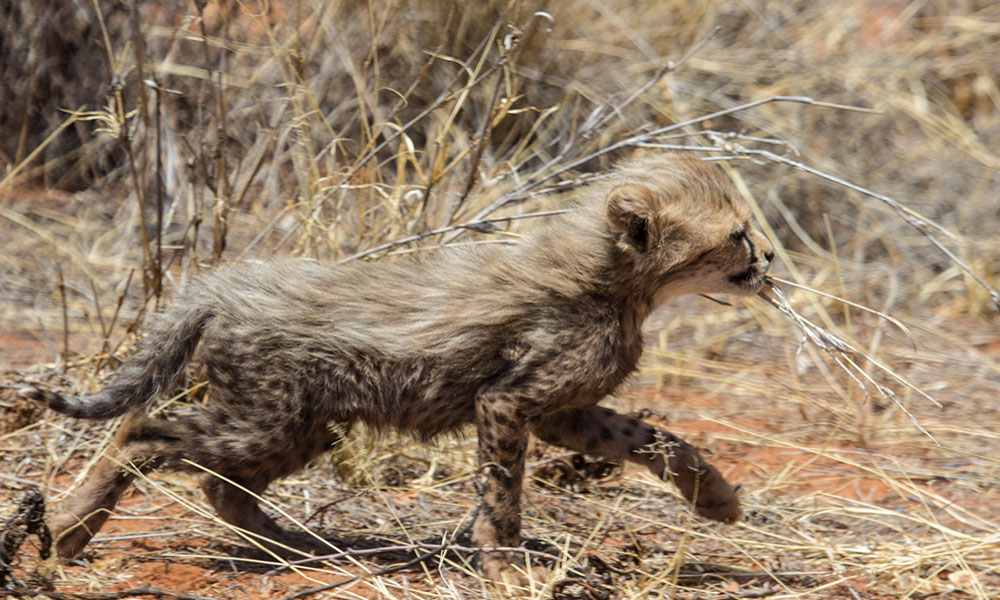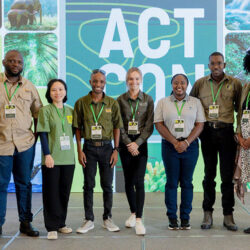Zinzi: Teetering on the Brink of Success
-

- by Dr. Laurie Marker November 23, 2015

In 2009, Zinzi, a 10 – 12 month old female cheetah, was captured by a farmer in the Karibib region of Namibia with no mother or other siblings. The farmer who caught her called CCF and the staff transferred her to CCF’s headquarters outside of Otjiwarongo.
Zinzi was orphaned at a much older age than we normally see. From the very beginning of her life at CCF, she had all the desired qualities that we look for in a release candidate. Cheetahs live with their mother until they are between 18 to 22 months of age, and it’s in the last few months that cubs learn how to hunt. In the wild, the male and female cubs remain with each other for a few months after they leave their mother. They hunt together during this time, as they are still not very skilled, but as a team they have more success in catching prey.
The Cheetah Conservation Fund (CCF) operates a sanctuary for orphaned wild cheetahs that have lost their mothers at too early an age for self-sufficiency.
In some cases, orphaned cheetahs are not suitable for release back into the wild. Imprinting on humans and loss of fear for humans can cause cheetahs to become problematic to local livestock. Under the right conditions, our research proves that certain individuals (normally those orphaned at an age of 6 months or older) display the necessary behaviour and characteristics (most notably a solid fear of humans) that make them suitable candidates for release back into the wild. CCF strives to rehabilitate and release these individuals. We have developed reliable methods for management and monitoring released cheetahs to maximize their chance of survival.
This was the case for Zinzi. Once at CCF, Zinzi was put in our 200 acre Bellebeno camp, an enclosure with other females of similar age and temperament. Here the cheetahs that have the potential for release are given limited human contact in order to maintain an appropriate level of wildness and shyness with humans and are exercised daily, chasing behind the feeding truck before being fed.
Zinzi spent nearly three years at CCF before being released back into the wild on June 2014. When we opened her transfer box she ran like a shot, and we did not see her again for an extensive period of time. We knew where she was by monitoring the GPS points provided by her satellite collar. During the first six-months of her release, Zinzi was only seen by the monitoring team a handful of times. Normally, a successful release depends on an intensive, month-long, post-release monitoring period. During this period the individual is checked up on regularly by the monitoring team. During this period, the monitoring team can provide assistance to the animal if necessary, through supplemental feeding and watering, until that individual is entirely self-sufficient. Zinzi never needed support or assistance. CCF teams regularly found the remains of her kills and saw consistent movement data transmitted from her GPS collar.
Releases and re-introductions of animals (whether wild or captive born) have been taking place for decades but, until recently, few criteria have been established to define success of such initiatives. Ultimately the main objective of these efforts is for the released individuals to contribute, through reproduction, to the already existing wild population. Zinzi was released into an area with a small population of cheetahs. Our research in Namibia has shown that cheetahs naturally live in a low density, of between 4 – 12 cheetahs per 1000 km2. On 12 September 2015, data from Zinzi’s satellite collar indicated that she had likely given birth to cubs and on 1 November 2015 CCF’s monitoring team saw the four cubs for the first time out of the nest. Rehabilitation success revolves around reproduction and survival. Therefore, we so far consider Zinzi’s rehabilitation a success.
So far, Zinzi has raised these four cubs entirely on her own, and this is a feat in itself, as often mortality is highest under three months of age. But, there is at least another 1.5 years until these young cubs will be able to care for themselves. Zinzi most certainly faces numerous challenges in the months to come, but she is well on her way to success and, if her performance over the last year and a half since her release is any indication of the next months ahead of her, her chances are good!


Related Reading
-
August 27, 2025
Sniffing Out Stories with the Scat Detection Dog Team




